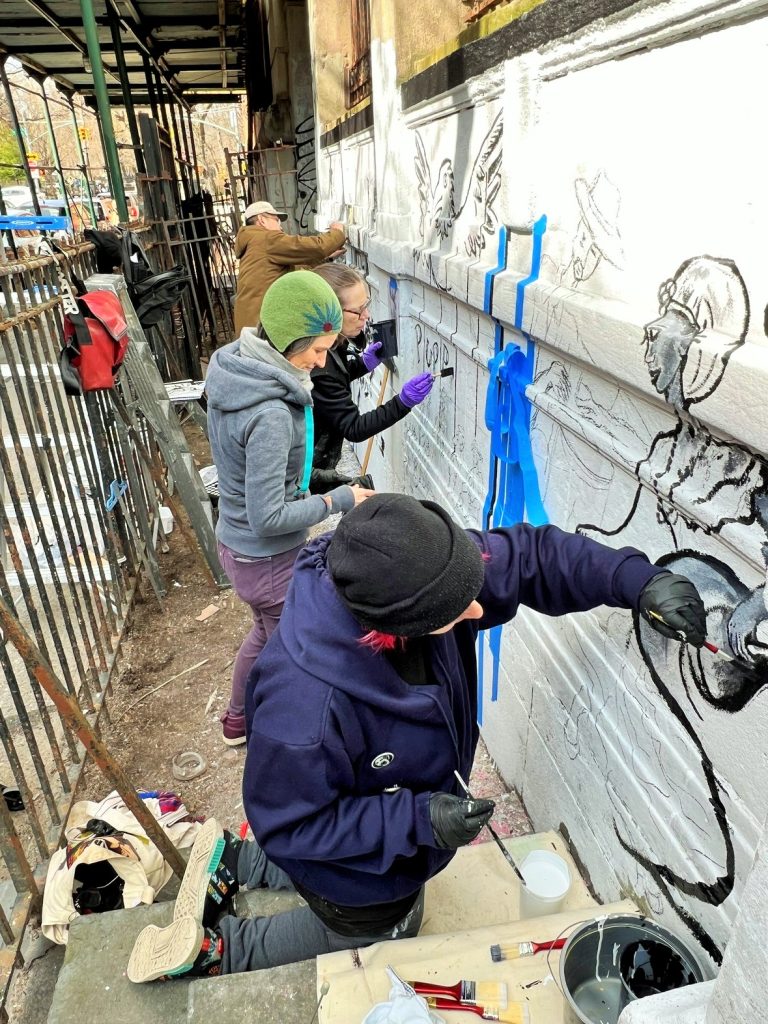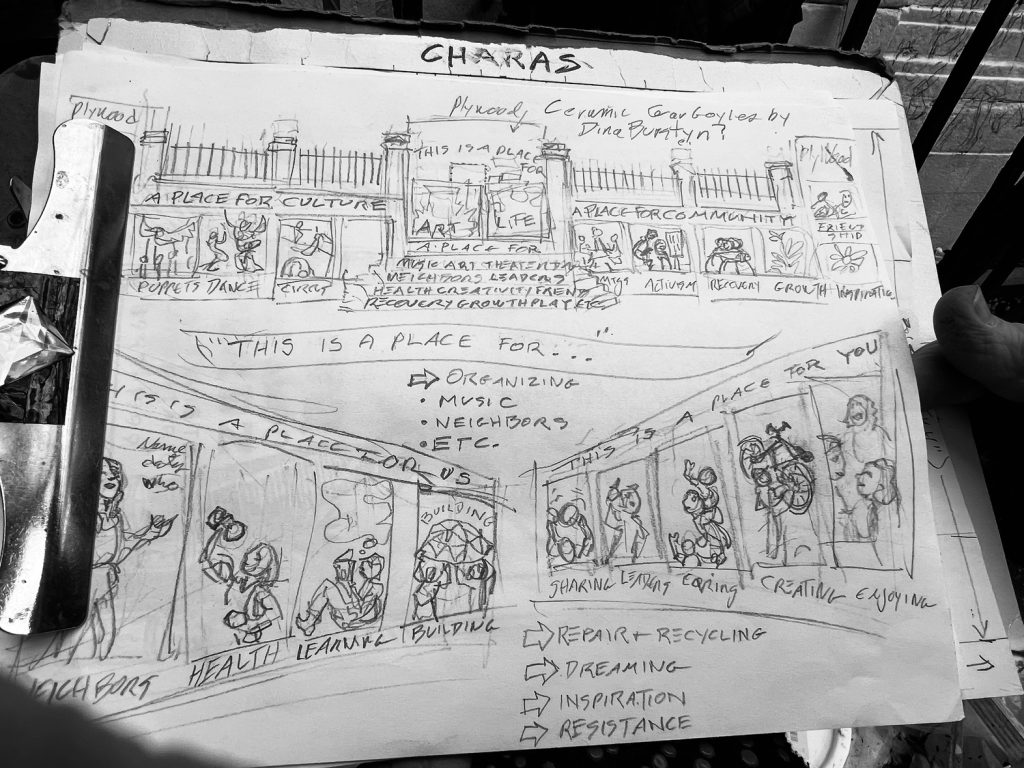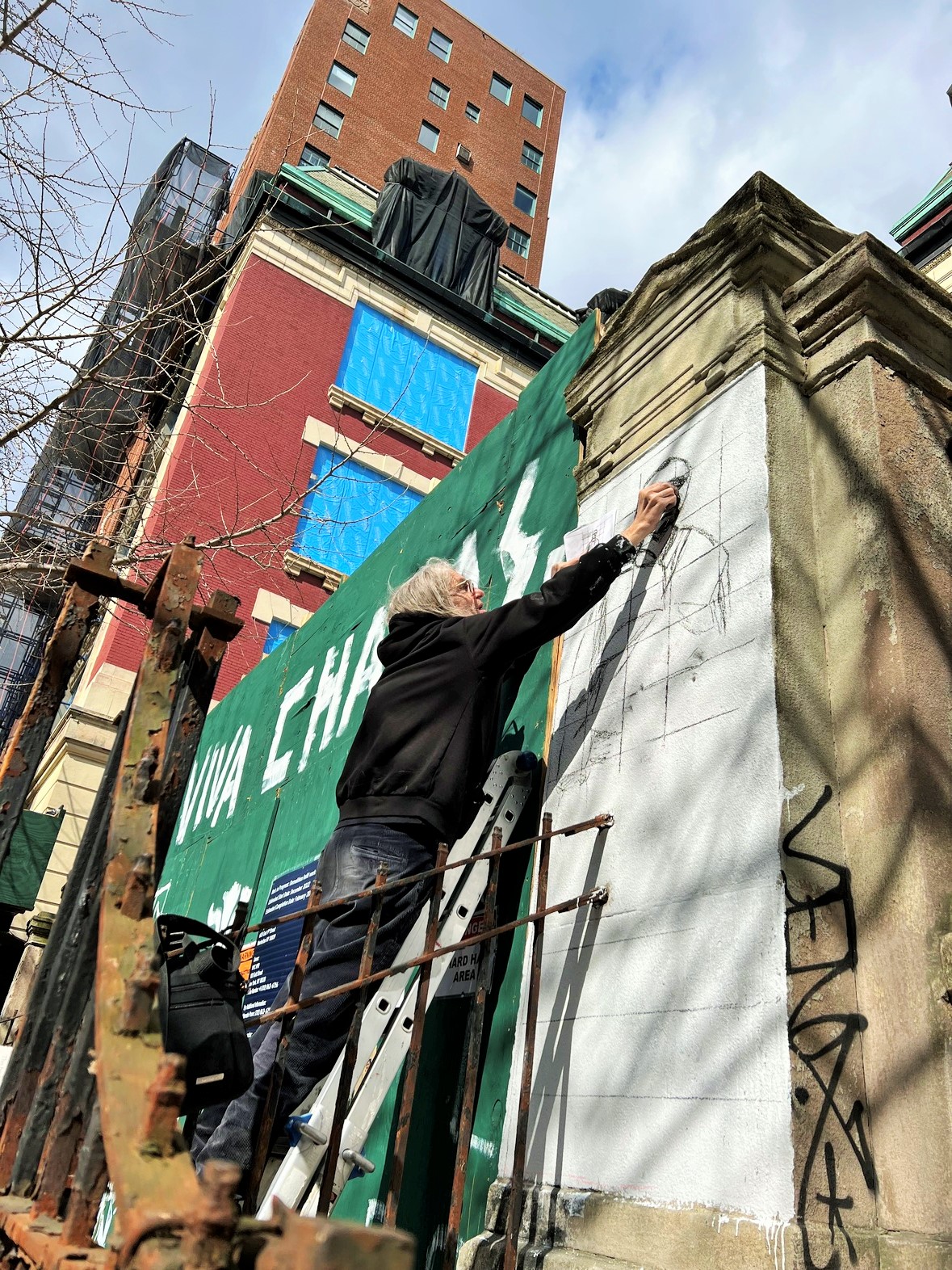BY BONNIE ROSENSTOCK | If there’s a mural on the back of the old P.S. 64, then there ought to be one on the front, too — right?
On Sun., March 5, a group of artists began working on a mural on the Ninth Street side of 605 E. Ninth St., the old P.S. 64 and the former home of CHARAS / El Bohio, a Puerto Rican-led arts and community center.

In November, another group of other artists, led by the Thrive Collective and David “Daso” Soto, decorated the building’s 10th Street side.
Seth Tobocman was perched on a ladder on March 5, doing a painting of Armando Perez, CHARAS’s late artistic director. Tobocman said the mural on the building’s other side only mentions Perez’s name, and that he feels this Loisaida legend merits his own mural.
“Most of us are connected with the comic magazine World War 3 Illustrated, and some of us had spent time in the building and had studios here in the 1980s and ’90s,” said Sabrina Jones.
Jones illustrated a six-page story of the history of CHARAS in the magazine’s 1999 edition.

The mural shows the different activities and uses that happened in the cultural hub, such as Recycle-A-Bicycle, 12-step programs, spaces for theatrical rehearsals and political arts groups, plus kids’ programs.
The artists were working on four panels. They said they might come back to paint the other 12 panels — or that others in the community could paint them. The purpose of the artwork, Jones said, is “to show people what this is a place for, what it has been, could be and should be used for.”
Developer Gregg Singer bought the old school at an auction of city-owned properties in 1998, but defaulted on repayment of loans from Madison Capital Realty. A judge has ordered that the building — vacant for more than 20 years now — be auctioned.


It would be a horror and nonsensical if it were torn down rather than “adaptive reuse.” Has a GoFundMe been produced?
Fortunately, the building is landmarked.
Alphabet City is the last authentic bohemian enclave in Manhattan, and its continued vitality is important to large segments of the local economy whose businesses depend upon the audience of tourists drawn by its events and creative output and neighborhood reputation. Defining this neighborhood as a Prototype Green City Retrofit would call national and international attention to admirable existing features, such as the cluster of lovingly-tended urban community gardens and the easy availability of bicycle and subway transportation, plus innovative features we could add by restoring P.S. 64 as a community center, such as a vertical farm and makerspace and small business incubator for wholesome forms of entrepreneurship.
A new generation has entered the colleges and started to spawn subcultures like the entourage of the idealistic Cyberpoetic performance troupe and arts collective Pixel Mouth, whose exponential growth has it on the verge of outgrowing its existing venue. Fans of up-and-coming bands like Pinc Louds, InCircles, and UNI and the Urchins potentially have the makings of a core audience for a 2020’s successor to Wetlands Preserve.
This is a crucial point in the history of Generation Z. The pandemic was a shock to the American psyche much like the assassination of JFK, and Beatlemania took off amidst the rebound from that. I believe we are at a similar point in history, a chance to reverse the trend that has for far too long had each decade worse than the last. Renovating P.S. 64 as a creative hub of the community, a Museum of the Counterculture, Ecotopian Resource Center, youth center and performance space would be a potent catalyst for a hopeful future.